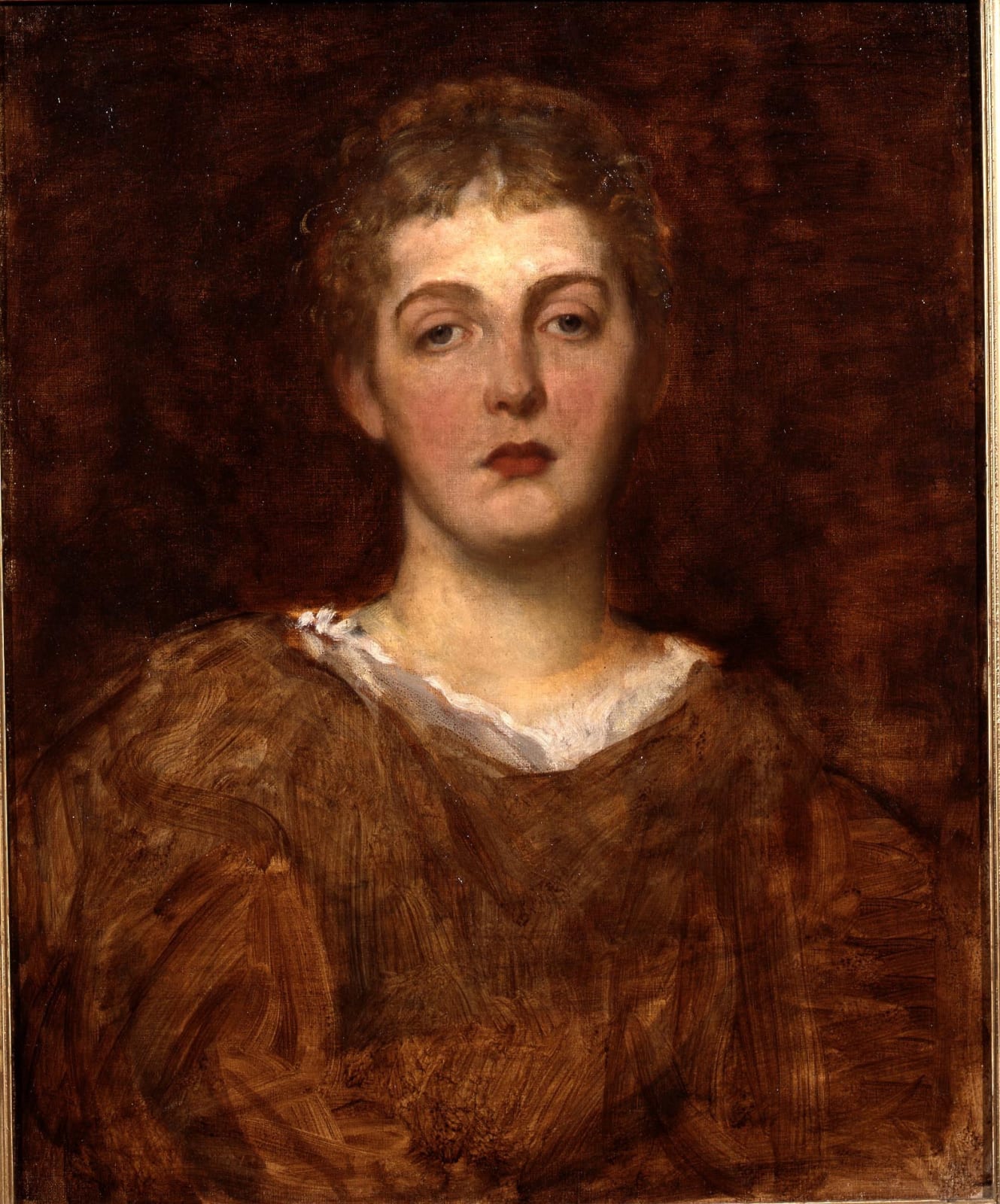
George Frederic Watts OM, RA
To view all current artworks for sale visit philipmould.com
George Frederick Watts travelled to Italy in 1843 on the strength of a three-hundred-pound prize won in the Westminster Hall competition of that year. The profound influence that Italy had upon his art can be judged not only by the remarkably Titianesque canvasses that are today preserved at the Watts Museum in Compton, but also by the painterliness that is visible in works such as Portrait of May Wedderburn. The concern with an apparently free brushwork is a telling contrast to the work of so many of Watts's contemporaries, who chose to take from Italian painting less vigorous and more quaintly antiquarian instruction.
The characterisation in this portrait seems swiftly but surely accomplished, and although the painting seems unfinished there is no certainty that Watts ever intended to progress it to a completed work.
We do not know who Miss Wedderburn was; she is not a sitter who appears, at least in name, in any other work. There is, however, a feeling of familiarity and ease in the manner in which Watts presents her; this portrait remained in Watts's possession until the end of his life.
Provenance
George Frederick Watts OM (1817-1904);Mary Watts, his wife;
Lilian Chapman (d. 1922), adopted daughter to G.F. and M. Watts;
By descent.
Literature
Mary Watts Catalogue of the Works ofG. F. Watts, compiled by his widow. Vol. II p. 170 ExhibitionsManchester City Art Gallery 1905 G. F. Watts Memorial Exhibition no. 5; The Watts Museum, Compton, Surrey. Extended loan c. 1938-1971.
Be the first to hear about our available artworks
* denotes required fields
We will process the personal data you have supplied in accordance with our privacy policy (available on request). You can unsubscribe or change your preferences at any time by clicking the link in our emails.